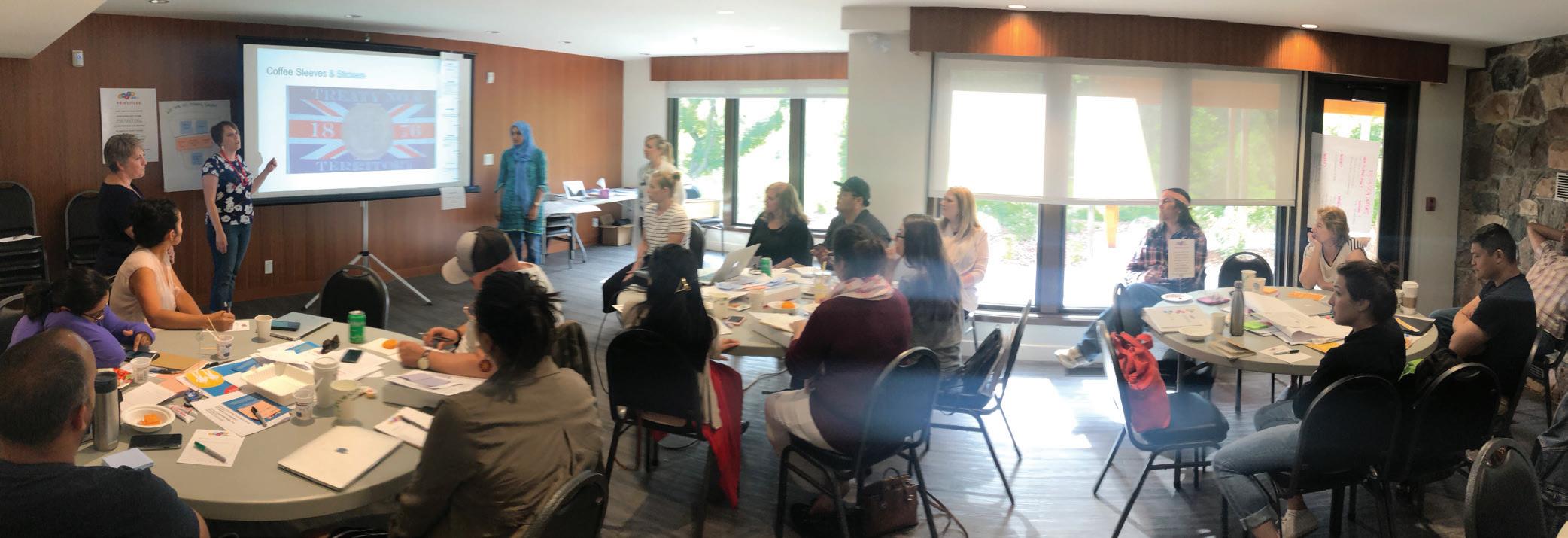
3 minute read
Exploring Wahkohtowin
Derek Jagodzinsky Rebecca Craver Iwona Faferek Rabia Naseer
Carla Hilario
Avery Letendre
Eileen Edwards
The Challenge
How might we reimagine what it means to be a Treaty person?
The Idea
To understand what it means to be a Treaty person, it is important to understand what is treaty. To build upon this idea, we developed an historical board game to serve as an entry point for people to begin to learn and experience how Treaty is understood from an Indigenous perspective. The aim is to inspire people to consider what they can do to walk together better on this land as a Treaty 6 person and understand the obligations we have living on Treaty land.
Tried and True
There will be multiple copies of the board game prototype (including the debriefing guide) created to give to a diverse group of people (e.g. Sleepy Middle, families, educators, Indigenous communities) to play-test and provide feedback. This will provide us the opportunity to learn and reflect on how the board game engages with people and what areas we can further refine.
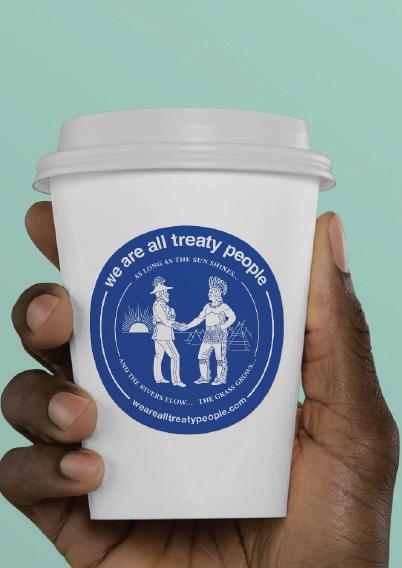

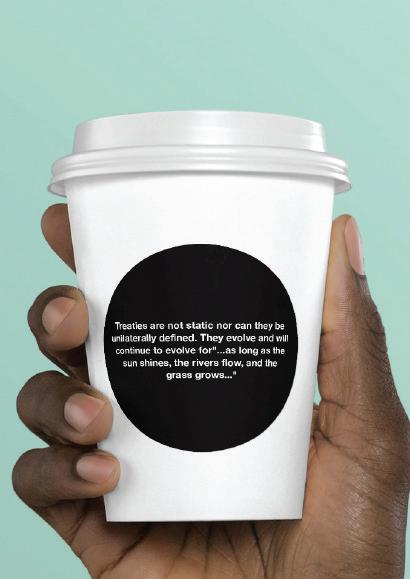
Coffee Sleeves
Inspired by the Treaty 6 flag and coin, we designed an emblem as a visual symbol to increase Treaty 6 awareness. Coffee sleeves are one method of increasing visibility and also educating the public about Treaty 6. The sleeves could be distributed throughout participating local coffee shops and cafes of public institutions. These have the opportunity to act as conversation starters and to educate the public with quick facts while enjoying a warm beverage. We have purchased the domain wearealltreatypeople.com to use on the sleeves that would direct people to existing online treaty resources.
Treaty 6 Board Game
A board game offers a unique and light opportunity to engage in Indigenous knowledges and ways of doing, as well as to understand the complexities of treaty and our relationship to it. The game can be played with children and youth that are at a critical age where they can objectively participate with treaty learnings and form their identity in relation to treaty. This can potentially cause a ripple effect wherein older generations may be impacted positively as well. The above is just a render as the game content and curation needs to be developed by Indigenous groups for appropriate learning and representation.
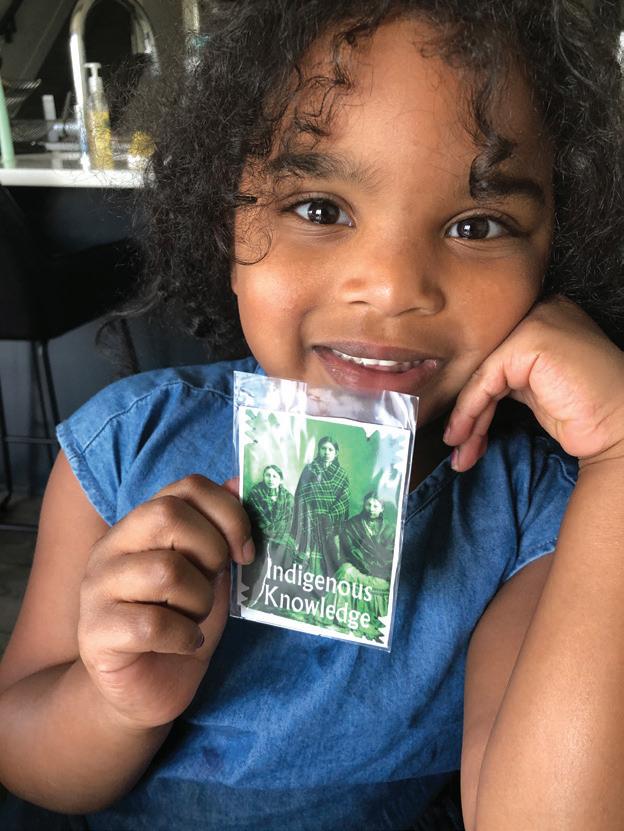
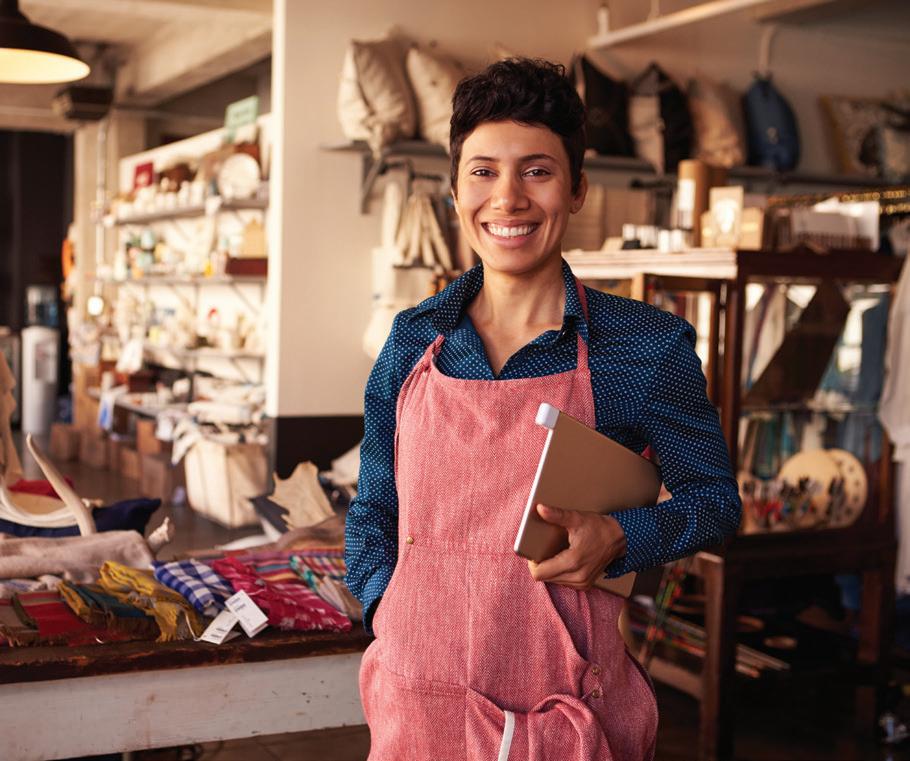



Public Spaces Stickers
The emblem has the potential to become a universal symbol for positive treaty relations. As a window sticker/ decal, it can be placed in storefronts of local businesses and public organizations alongside pride flag stickers and other community building mechanisms, and act as an acknowledgment of Treaty 6.

What We’ve Learned
We have learned to adapt to new environments by continually improvising on how to reach our goals in challenging times. Throughout the whole process of working through our idea and understanding our role as a Treaty people, it has been pivotal to understand the role, space, power and privilege which we are navigating in. It is important to centre Indigenous people in decisionmaking roles and position ourselves to listen to learn as we move through the process. From the conception, design, content development and marketing phases, having the guidance and leadership of the Indigenous community leaders and knowledge keepers has helped to highlight important pieces to bettering our relationship and understanding.
Next Steps
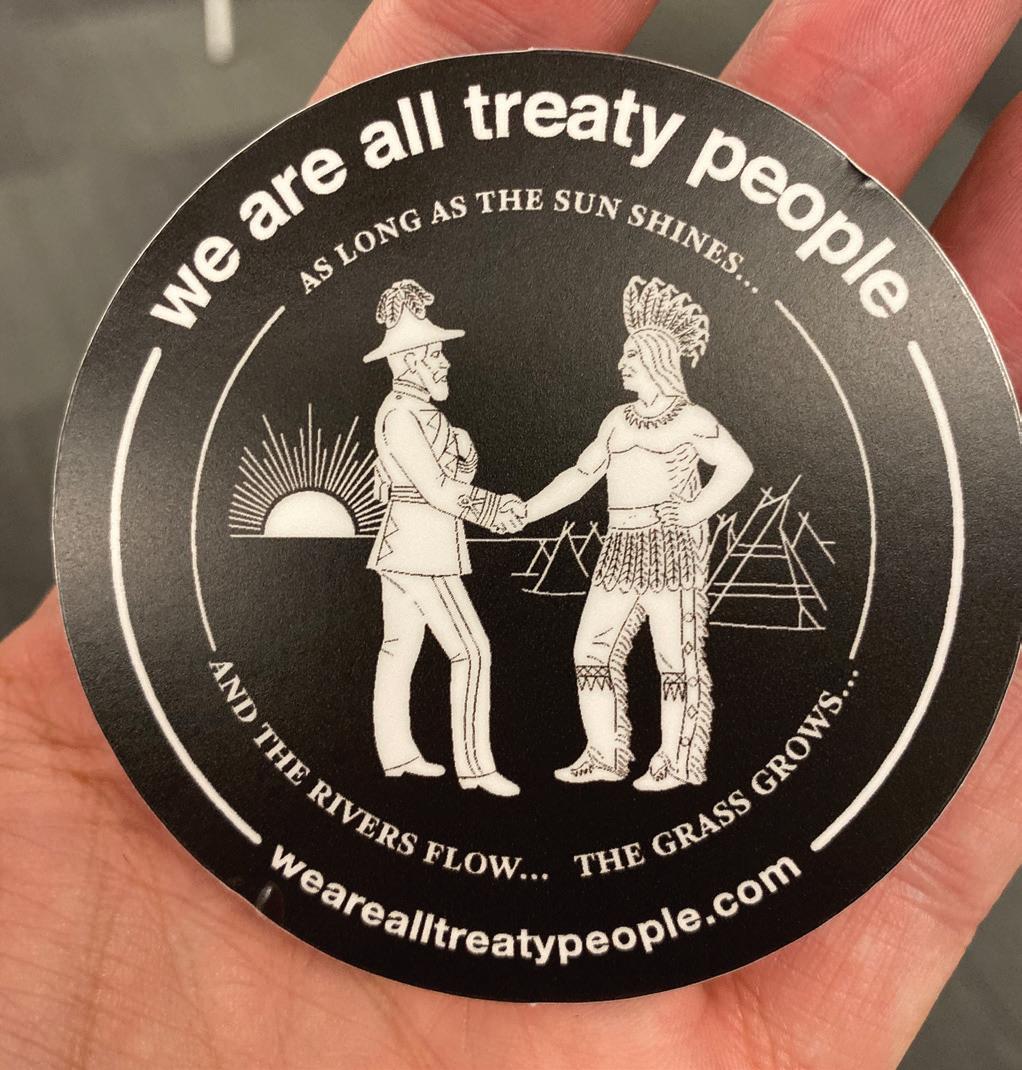
The next step is to refine the prototypes according to the feedback we will receive from the game play testing groups and create our final prototype. The final prototype will be presented to a group of local community leaders and educators to strategize on how to launch the game into the mainstream.
Top: Prototype materials on display at the community showcase Bottom: Close up of public space stickers









